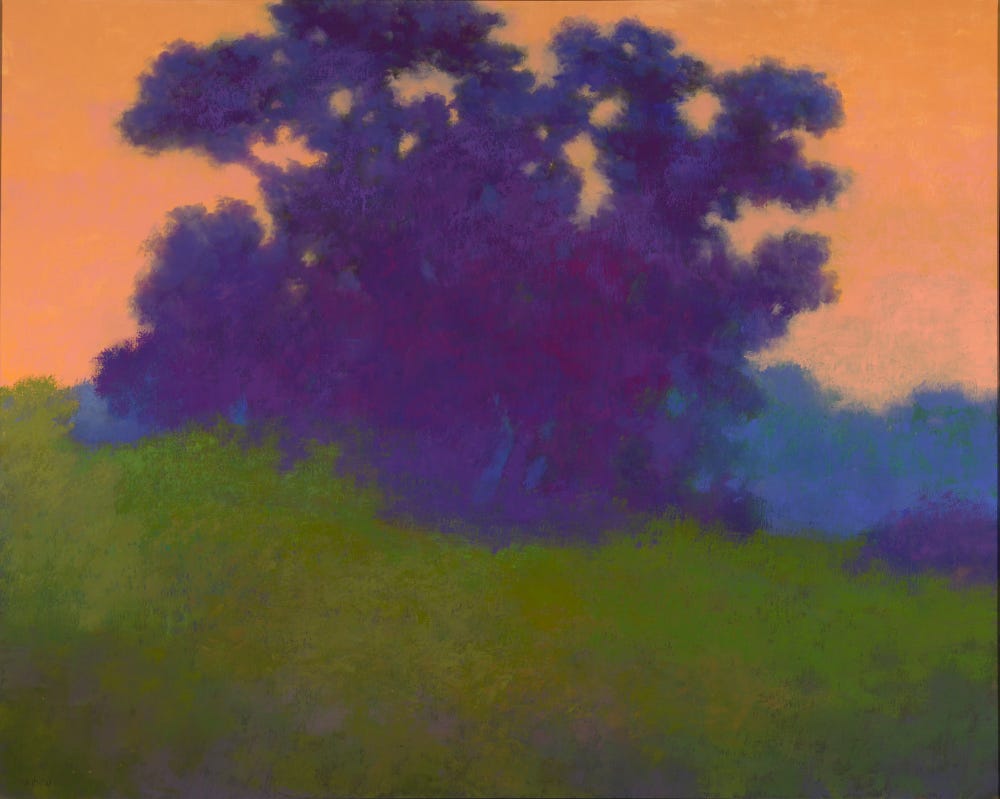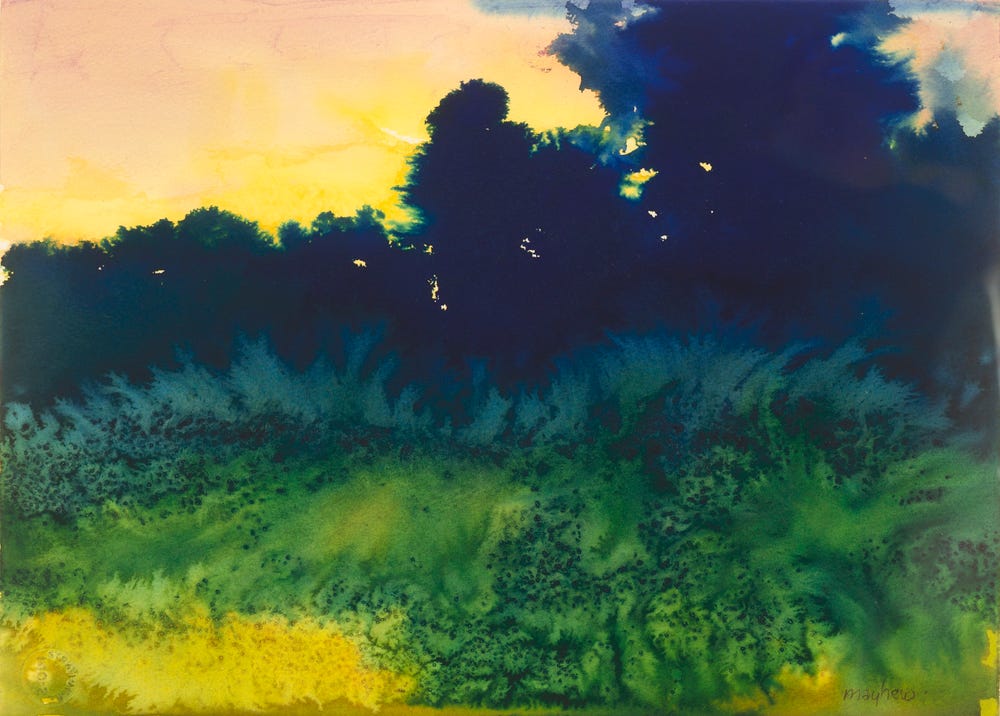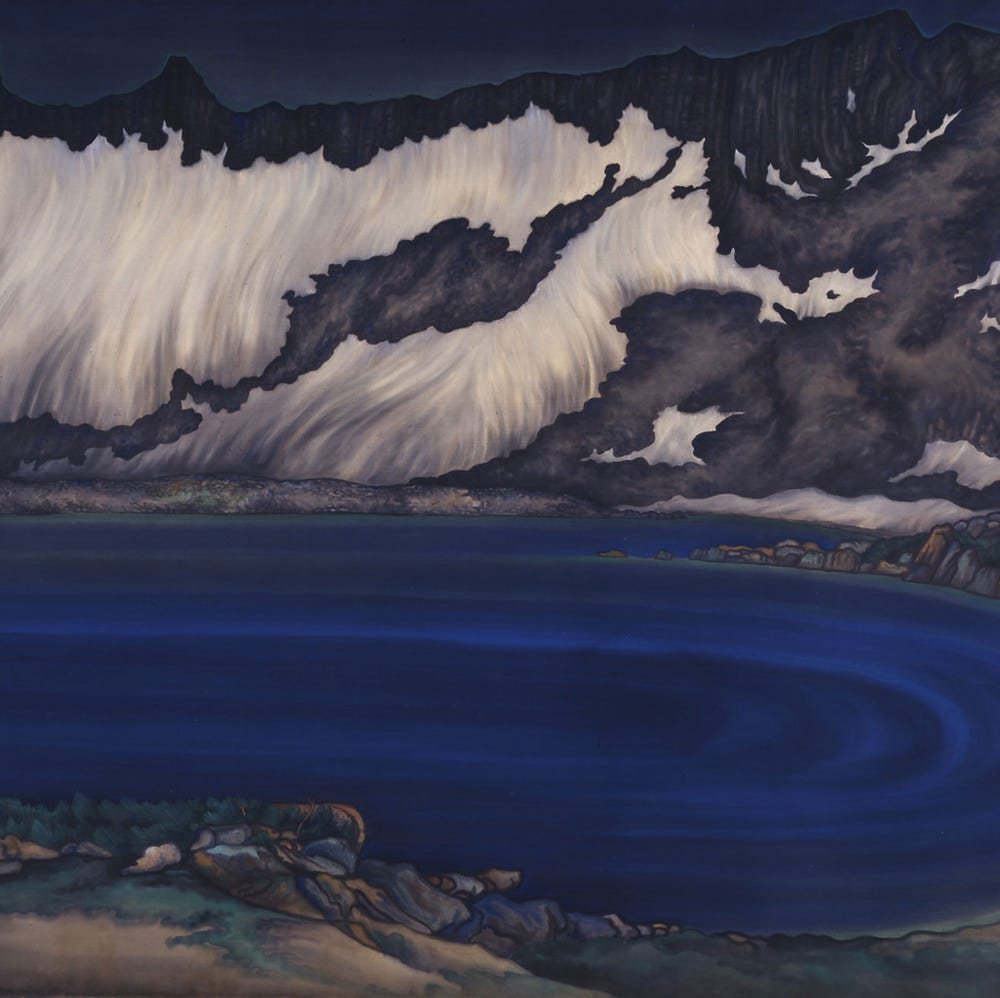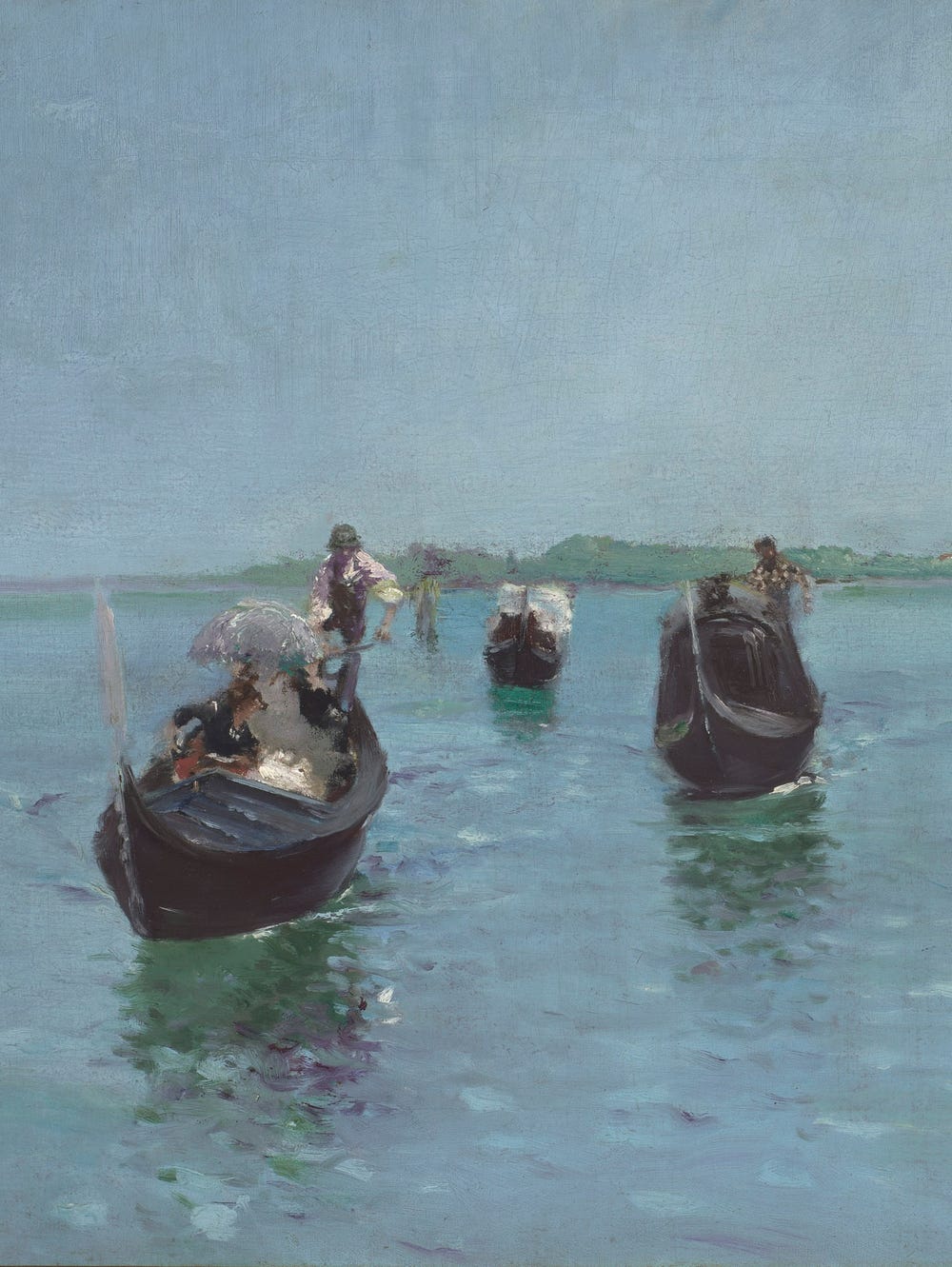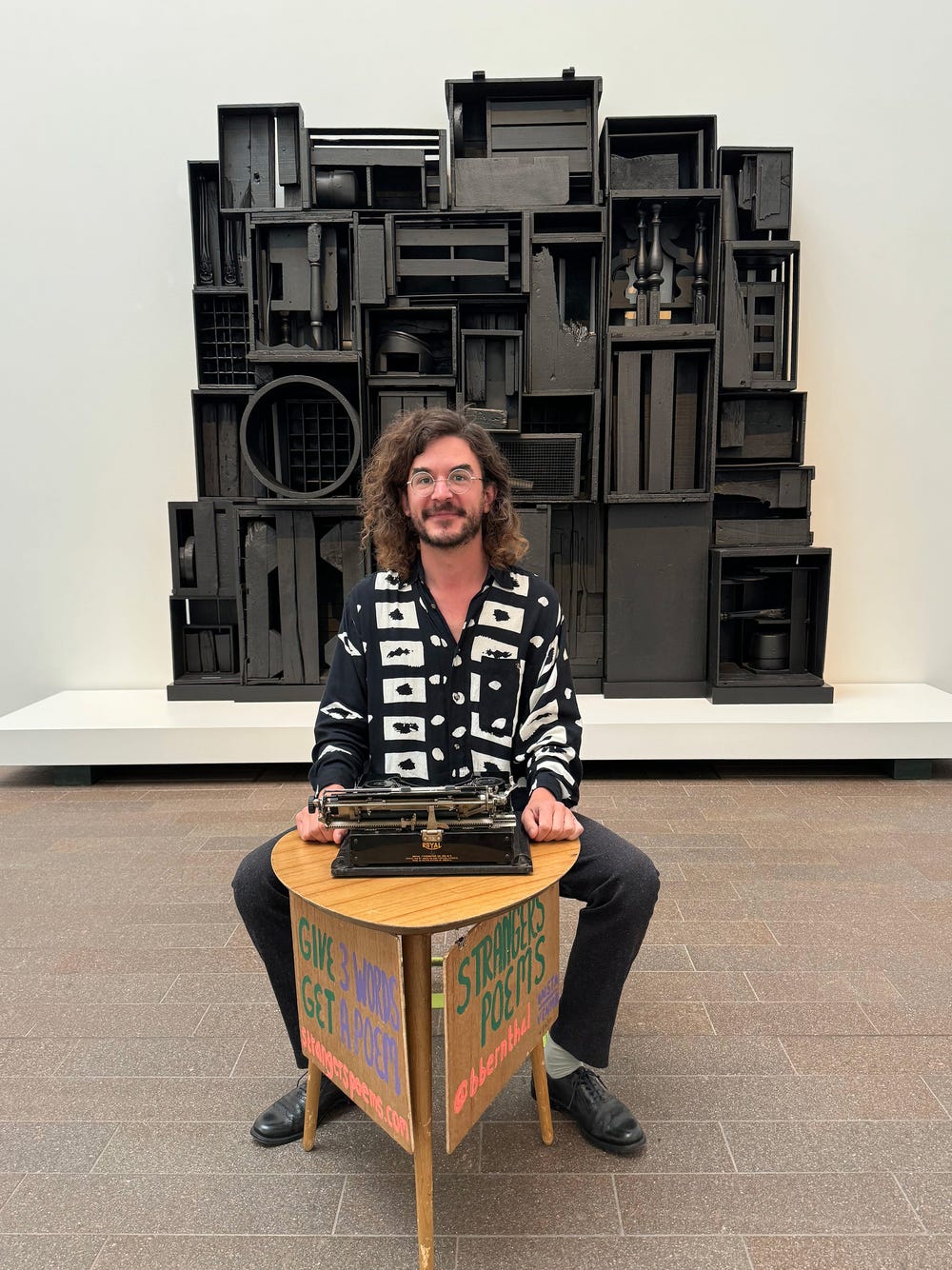Richard Mayhew, Spring Series #1, 1997. Watercolor, 10 1/2 x 14 1/2 in. (26.7 x 36.8 cm). Fine Arts Museums of San Francisco, Achenbach Foundation for Graphic Arts, Museum purchase, Judith Clancy Fund, 1998.72. Courtesy of the artist. Photograph © Fine Arts Museums of San Francisco
At the center of Richard Mayhew’s (American, b. 1924) Rhapsody, a flamboyant purple-and-blue copse of trees erupts in a vertical thrust, interrupting the horizontal rhythms of a smoldering orange sky and verdant meadow. These are natural forms, but it would be a mistake to call the work a landscape. Deeply influenced by the Impressionists’ exploration of light and the emotion of Expressionism, Mayhew captures the numinous, rather than the superficial, qualities of nature.
Richard Mayhew, Spring Series #1, 1997. Watercolor, 10 1/2 x 14 1/2 in. (26.7 x 36.8 cm). Fine Arts Museums of San Francisco, Achenbach Foundation for Graphic Arts, Museum purchase, Judith Clancy Fund, 1998.72. Courtesy of the artist. Photograph © Fine Arts Museums of San Francisco
— Richard MayhewMy art is based on feeling — of music and mood and sensitivity and the audio responses of sound and space. I want the essence of the inner soul to be on the canvas.
Unlike the Impressionists, Mayhew does not paint his work en plein air. Rather, he commits the experience of a place to memory and then creates an amalgam of physical forms that communicate the effect of the encounter.
Richard Mayhew, Spring Series #1, 1997. Watercolor, 10 1/2 x 14 1/2 in. (26.7 x 36.8 cm). Fine Arts Museums of San Francisco, Achenbach Foundation for Graphic Arts, Museum purchase, Judith Clancy Fund, 1998.72. Courtesy of the artist. Photograph © Fine Arts Museums of San Francisco
Mayhew cites jazz musicians, such as Miles Davis and Cecil Taylor, as major inspirations. In addition to Rhapsody, he has titled several other works after music, including Sonata in G Minor (1987), Overture (2001), and Orchestration (2006). The titling indicates the artist’s ambition to create visual analogues of musical experiences. The qualities of a rhapsody — improvisation, wildly contrasting tonalities and moods — are indeed evident in this work. In its riotous plume of color, one can almost hear the soaring opening measures of one of George Gershwin’s epic pieces.
We are now open and thrilled to welcome you back safely to the de Young museum! You can see Richard Mayhew's Rhapsody on view in Gallery 27A. With your health and safety as our top priority, we’ve made some changes to create additional time and space for everyone.
Read Our Safety Plan
Text by Janna Keegan, assistant curator, contemporary art and programming. This text is an excerpt from the upcoming selected works publication, de Young 125, available for presale in Spanish, Mandarin, and English from the Museum Stores.
Learn more about American art at the de Young.
